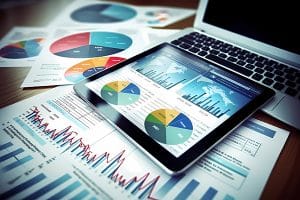
Chris Kuehl
Managing Director • Armada
“Mixed” – The Economist’s Version of “Partly Cloudy”
What does it mean when data is described as mixed? This has to be one of the most common economic catch-phrases and seems to say, “we have no idea what is going on”. In some respects that is true, but the “mixed” description goes deeper than that. What we are seeing now is not uncommon with an economy the size of the US. Some sectors are doing quite well and others are underperforming. The US generally avoids complete recessions and instead experiences sector recessions and regional recessions. The overall consensus among economists is that the US is not going to hit a true recession this year or in 2024. Growth rates have been above 2.0% and few see them falling significantly. Given this – what is the conclusion those connected to the economy should reach?
Simply stated – being in the right place at the right time will permit some pretty healthy growth and if one is in the wrong place at the wrong time there is a good chance of decline. The question is what sector is likely in that growth environment a quarter or two from now. What sectors will not see that growth and what are the factors that would alter this assessment?
Armada models show some robust growth in manufacturing through the bulk of this year, but questions start to emerge in 2024. One of the consistent sectors for expansion has been motor vehicles – our data has shown it above the trend line for months. It has been driven by a combination of factors – pent-up demand from 2020, the age of the US overall fleet (12.5 years) and the steady employment numbers that have allowed people to borrow. The threat comes from the high price of a new car and the tightening of loan standards. The expectation is still growth into 2024. Aerospace has been getting more robust after a dramatic drop in 2020 but it is still below the ten and twenty year trend line. This growth will accelerate however as the demand factors are very strong and the growth is likely to be above trend in 2024.
The machinery sector has been slumping for the last several months but has started to make a major turn, towards the positive. This has been driven by the continued investment in robotics and technology. The labor shortage is not going away and that forces even smaller manufacturers to invest in machines. The reshoring pace has accelerated as well and that also boosts this kind of investment. Capital spending ebbed but remains historically high as adapting to new technology demands investment. The concern is that this wave of investment may have peaked and it will be a while before further investment is needed.
Overall, the electrical equipment sector is expected to grow above trend but should start to slow down a bit next year. There is a significant factor that has just started to manifest and could alter the trajectory. The effort to push conversion to electric is well underway and it is loaded with incentives for consumer and producer alike. If the consumer does indeed respond and shifts the demand levels will accelerate. The computer and electronics sector has slowed a bit but is still in a growth environment. The rush to accommodate increased reliance on communication and tech has eased but it is still a motivator.
What does one do with all this strategically? There are three points to take from the data thus far. 1) the rapid growth in 2021/2022 came to an end but did not go into reverse, 2) the threat of a recession in 2023 was somewhat overstated although slowdowns were noted in sectors like retail and residential construction. Number three is the most important takeaway. The data shows 2024 as a growth year although not one that will move at a blistering pace. The GDP numbers expected are very close to the 25-year average and that means that companies can count on expanded demand and growth opportunities but not so robust as to compensate for bad decisions. The chief focus for manufacturers will continue to be labor – shortages as well as higher wage demands. The second key concern will be the cost of commodities and other inputs as these will be affected as much by geopolitics as the economic drivers of supply and demand.
Recent Posts
- Economic Reconnaissance | Economic Growth During the Next Presidency December 3, 2024
- How Credit Managers Can Step into Executive Leadership November 13, 2024
- Economic Reconnaissance | Putting the FAB in Fabrinomics!! October 1, 2024
- Economic Reconnaissance | Sifting Through the Noise During “Silly Season” August 1, 2024
- A Big Win for Creditors of Small Business Debtors June 27, 2024
- Economic Reconnaissance | The Fable of Henny Penny June 4, 2024










